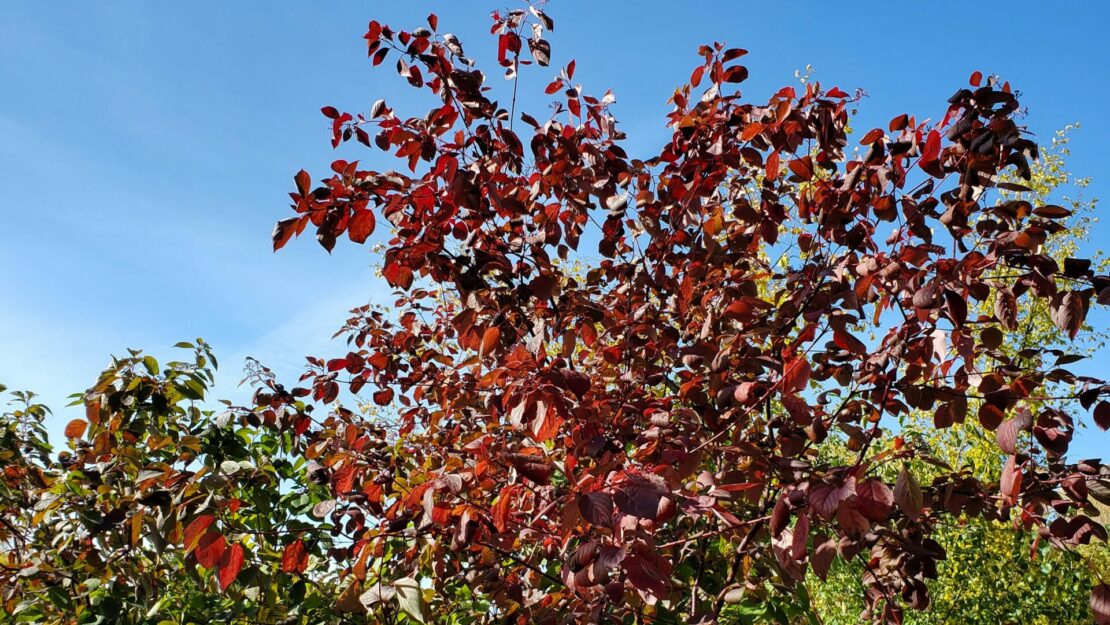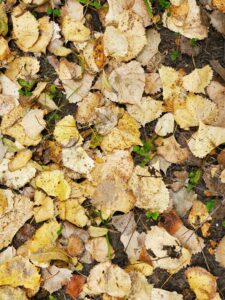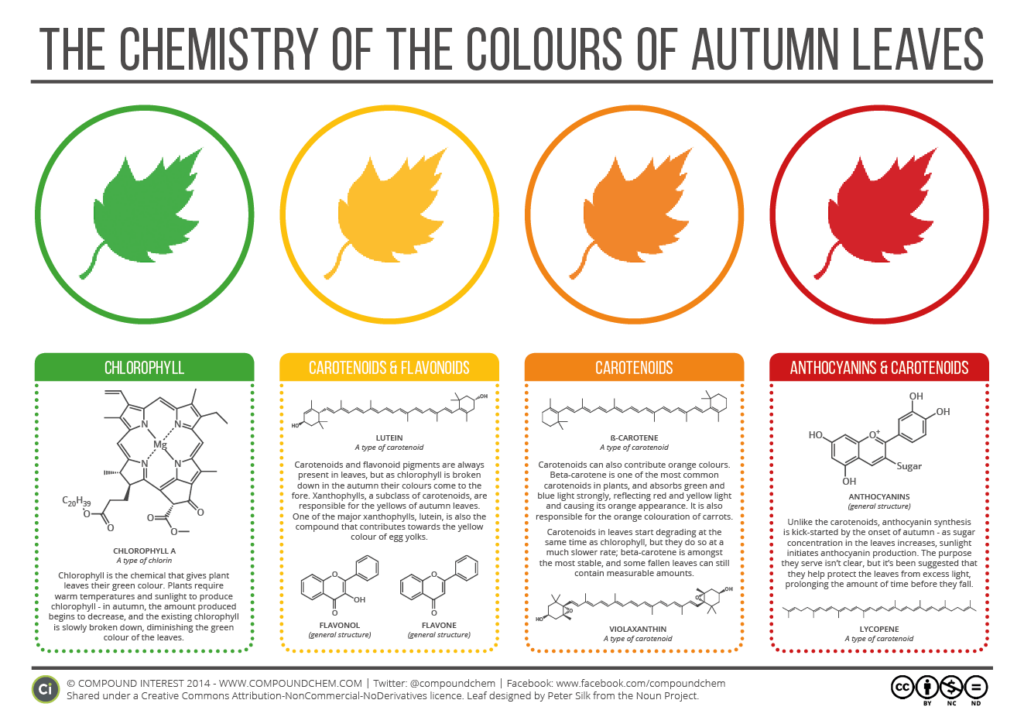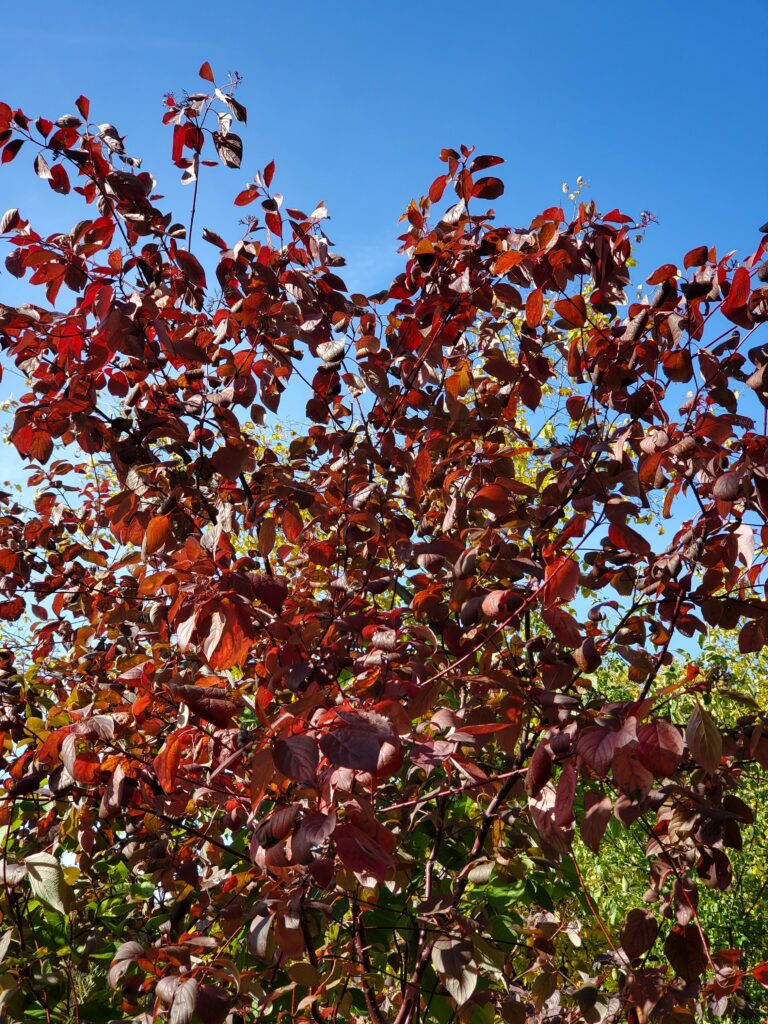Why do leaves change colors?

By Clara Brown, Fort Snelling Visitor Services Specialist Individual Placement / AmeriCorps Member placed at Fort Snelling State Park, Minnesota Department of Natural Resources

It’s officially fall! Every day when I drive into Fort Snelling State Park I notice more and more signs of fall. Birds are flying south, the days are getting shorter, and the forest is beginning to glow in shades of red and gold. Fall colors are one of my favorite parts of the season and how the shift from green to gold happens is a fascinating process.
The first step in understanding this change is to know where the green come from. Leaves contain a pigment called chlorophyll which absorbs sunlight. The energy absorbed from light is stored in the leaf and, through photosynthesis, the plant uses it to make food for the tree in the form of sugar. Chlorophyll makes leaves green because it does not absorb the green wavelengths of white light. That wavelength is reflected from the leaf, making it look green.
While photosynthesis is essential for tree survival, fall creates some challenges for allowing it to continue. As the days get shorter and the nights get longer there is less and less sunlight for the chlorophyll to absorb. Additionally, the colder temperatures put the cells of the leaf at risk of rupturing because leaves are full of water and water expands when frozen. If the cells rupture they would be useless for photosynthesis. These challenges cause deciduous trees to cut their losses and drop their leaves. But before they do, they slow the production of chlorophyll way down and the remaining chlorophyll is reabsorbed, removing the green from the leaf.
Lucky for us chlorophyll is not the only pigment that leaves contain! There are additional types of pigments called carotenoids and flavonoids that are also present in the leaves year round. When the chlorophyll breaks down in the fall these pigments are revealed. Carotenoids and flavonoids reflect yellow and brown light making leaves those colors. Carotenoids also contribute to creating orange colors. In some leaves a new set of pigment called Anthocyanin is also produced in the fall and those pigments in combination with carotenoids create red leaves.

Many groups of trees have fall colors that are specific to them. Oaks are generally red, brown, or russet. Aspen, cottonwood, and birches are a golden yellow. For maples the color varies by species with red maples turning a brilliant scarlet, sugar maples turning an orange-red, and silver maples turning a yellow-brown.



While the presence of different species influence what colors we see, temperature and moisture can effect when we see them. Warm, sunny days and cool but not freezing nights generally create brighter colors. These conditions increase the production of anthocyanin pigments. Because carotenoids are always present in leaves, the yellow and orange colors are generally constant from year to year. When it comes to moisture, a late spring, or a summer drought, can delay the fall colors. A warm wet spring, nice summer weather, and warm sunny fall days with cool nights are the recipe for the best colors.
Resources:
